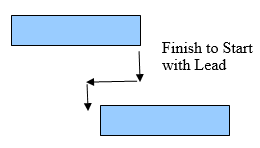If you are Project manager then you
can meet different types of persons as a team member in your project team. For
project succession it is very important to handle team member very smartly. Different
persons cannot be unique in their nature, attitude, smartness or any other
criteria. So as a project manager you need to be smart enough to deal with them
very carefully and keep them all align with their different types of characters
in one project team. This is all about managing soft skill of people and to guide
them to achieve target.
Some team member is very
complainer in nature. He/she always find problem in task, deadline, announcement,
other team member, schedule or any other aspects in the organisation or for
particular project. Due to this type of attitude he/she always drill down the
unity of the team and try to make others all like him/her. Other team member
also get inspire from them and influence their behavior. It can be very problematic
for project and very much painful for Project manager. In this type of
situation, Project manager has to talk with that team member and find out what
exactly the reason for complaining is. This type of nature cannot be changed
with any shouting or restrictive attitude by Project manager. Project manager
has to be calm and cool to discuss with them and try to understand the main
problem and then project manager can take decision to make it smooth and shine.
Some team member is always late
comer in office. They always miss some important meeting, announcement or any
other activities. Due to this late coming, always project manager need to
explain him some points again and also it will badly affect the project
timeline. Here, Project manager can try to find out his/her reason to come late
in office and try to resolve it. Project manager can explain him/her about timing
importance and timeline of the project.
Some team member has skill set
issue so they cannot finish their task on time. Sometime it can be skill set
issue or sometime it can be some other issue so he/she don’t complete their
task on time. Project manager need to ask them about their problem and try to
make them understand about their weak points and solutions to resolve it.
Some team member is so smart but
cannot want to give their best. He may be has bossy nature to understand self
as a best and talented or over confident always then others. It can be spoil
whole team and it will badly disturb the success of the project. Project
manager need to explain them as a senior person and try to explain them better
ways about career and life.
Sometime it’s not necessary to
behave as a Project manager with team but as a mentor you can solve so many
difficult situations. As a mentor or guide you can guide them and try to solve
the problems and team member’s nature. It can be lead them towards positive environment
and also build self confidence in them. Project manager is right way to lead
the project but to make it success you need to be in different types of roles
throughout the project. If everything you tried but still ball is not in your hand
then you can think in a different and some strict approach because as a Project
manager, to make project success with definite timeline, schedule and with
specified budget is first approach for you with these all other aspects.
To sum up, as a Project manager you
will meet different types of members in your career as a team but you have to
be keep them align and handle them politely with smart and professional
actions. Always choose professional and best interpersonal communication method
to handle this type of situation.
Best wishes to all Project
Managers.



















